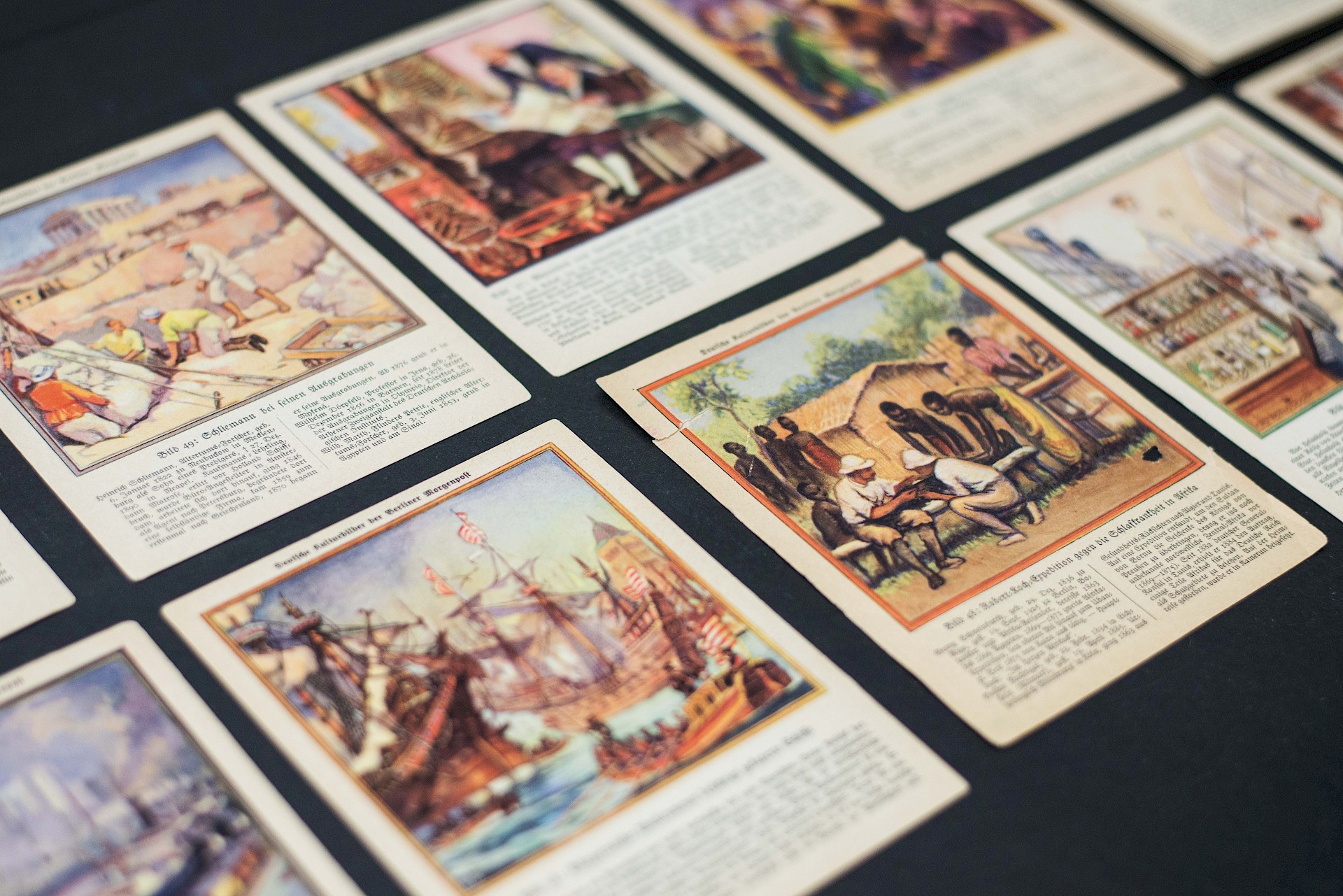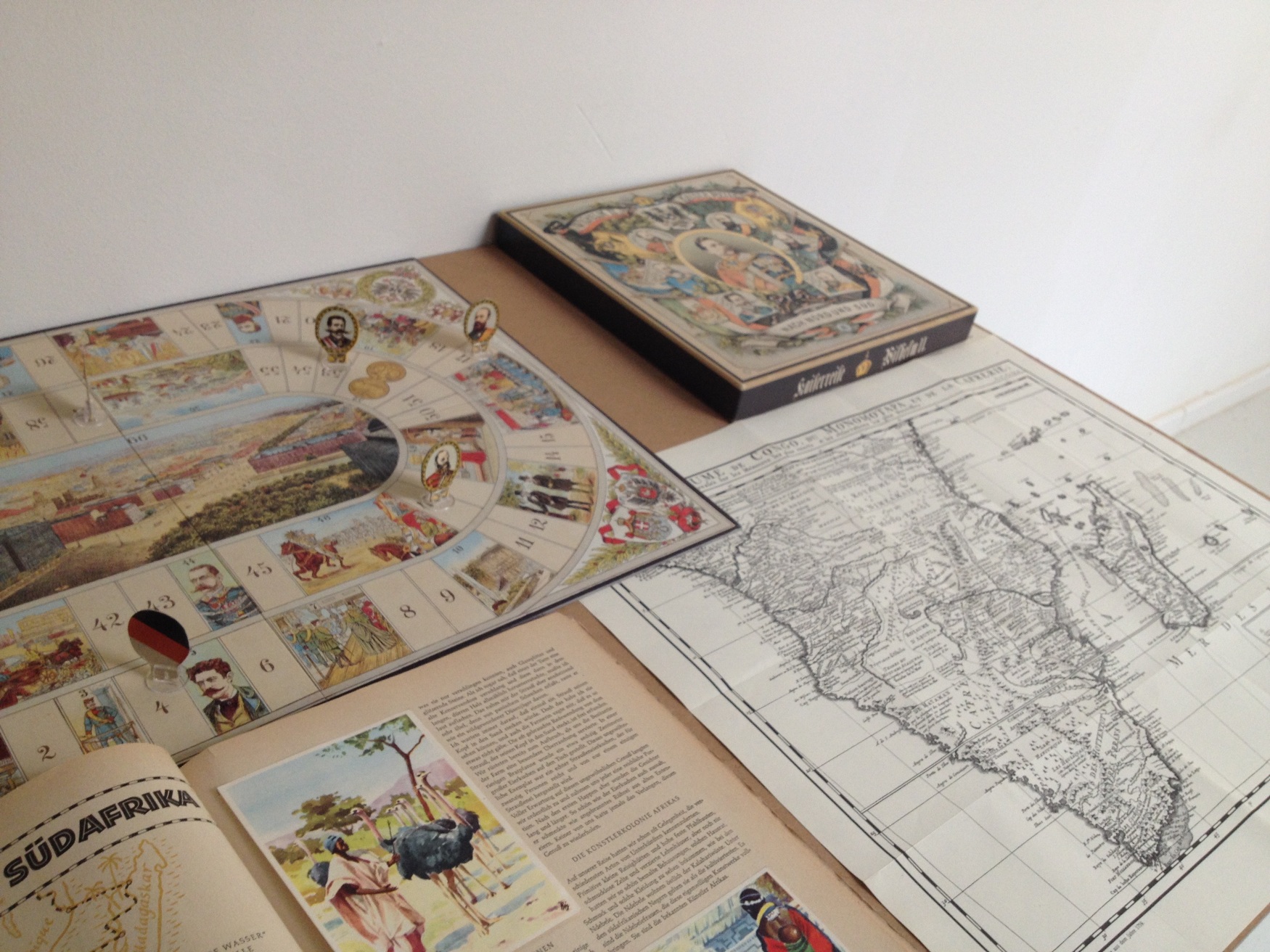The Passage
Colonial Neighbours Fragments N°5 11.01.–26.01.2019
With Sepideh Rahaa
THE PASSAGE is the latest installment of Colonial Neighbours’ FRAGMENTS series – a series of interventions in and out of SAVVY Contemporary's long term collective archive project on German colonial history. Artists, researchers, activists, and cultural producers are invited to engage with the Colonial Neighbours’ archive, activating and critically contributing to the project.
In the fifth edition of the Fragments series, Helsinki based artist Sepideh Rahaa explores the notion of representation and the perception of women inside and outside of Iran. Sepideh Rahaa was invited to join the conversation and reflect on colonial entanglements in regards to these themes.
What does the contemporary life of Iranian women look like? In response to being asked this question, Sepideh Rahaa started a project related to the contemporary life of Iranian women for her residency presentation at Ladmoen Kunstnerverksteder in Trondheim Norway in 2014. This request concerned Rahaa for many reasons, as she does not believe anyone can represent millions of people and their various ways of being, as women are not and cannot be assumed to be a monolith. Considering the colonial times, its history and its present, the representation of Iranian women is one of the most complicated and problematic matters, specifically in the West. In such representations, one cannot dismiss the colonial perception which has massively contributed to the current stereotypical perceptions of Iranian women among others in the West— the exotic other which Western feminism strongly defines and theorizes itself against, the so called ‘hopeless’, ‘helpless’, ‘submissive’, ‘passive’ and ‘oppressed’ women of non-Western culture! This became a starting point for the artist to initiate conversations with women in Iran and to use Facebook as a medium to narrate the intertwined complexities of Iranian women’s identities.
The most important comments arose from contradictions, disappointments, nationalism and its danger of distorting the truth by ignoring the bitter parts of it. The artist was told several times that although her efforts as an Iranian woman-artist are important, it ‘will not change anything, and Westerners will never fully recognize what Iran is and its Iranian ways of being for women. Some of Rahaa’s Iranian intellectual friends and colleagues both in Iran and abroad argued the importance and complexity of this representation in relation to nationalism and the existing long historical disappointment twisted with colonial time. They reminded her of colonialism and postcolonial history in relation to today’s conditions of Iran and Western perceptions of it; for the West to define itself and for its pursuits, it will never recognize the East fully, only on the periphery. This is why it is so important to listen to other voices, so that we can begin to understand the world from a more inclusive, constantly shifting, non-hegemonic point of view. And although sometimes it feels like the end is never in sight, we have to remember that the journey to liberation is embedded in its destination.
What can we learn from our history? And what we do with this knowledge? Unfortunately, women and their contributions to our history have often been silenced or made inaccessible through lack of recordings. While investigating the Iranian Women’s Movement, I was introduced to the story of Qamar, among others in our history during the 20th century. It was so fascinating to me how one act of resistance could change the course of history for half a century. Qamar-ol-Molouk Vaziri (1905-6.8.1959) was a prominent female singer who was celebrated as the first woman of her time to sing in public in Iran without fear or a veil. She paved the way for many women after her to sing unapologetically and to be respected within society. She fought all her life against problematic social norms in the society and against poverty, actively donating all of her earnings to orphanages. She used to read Mirzadeh’s poem in her public performances, in order to critically examine the problematic social norms of her time. How could I use history and Qamar’s story, her brave intentions, and the trajectory of Iranian women’s liberation as a point of departure? I aimed to problematize the social norms existing in both present-day Finnish and Iranian societies by making the chador with the same poem and performing it in public places in Iran including from the North to Golestan Palace in Tehran where the kings, for over 400 years, ruled without presence of women in the court. Performances were also done in Finland in public spaces where audience members participated in a dialogue shortly after each performance to recount their reactions, sometimes feeling provoked or disturbed. This series is titled Different Faces of Us and is done in collaboration with Finnish artist Anna Knappe.
Sepideh Rahaa is a multidisciplinary artist based in Helsinki. Through her practice she questions social norms and conventions while focusing on womanhood and resistance, migration, the body and its representations. Currently she is pursuing her doctoral studies in Contemporary Art at Aalto University, investigating the concept of identity and its transformation and hybridity with a critical and analytic view on representation and image production of the female body; how female bodies become politicized in society and in contemporary art. In her artistic work, she aims to initiate methods within contemporary art to bridge individual perception to the social perception by creating spaces for dialogue. She investigates the concept of life and its transformation between the past and present. The body and its performative presence through time and space are significant elements of her works where she combines memory, sense of belonging, and personal narrations of everyday life. Rahaa's work is a combination of different disciplines, including painting, photography, performing art, and film and video installation. She holds a BA in Painting and Visual Arts, MA in Art and Research from Shahed University in Tehran and a second MA in Fine Arts and Contemporary Art from Aalto University. Her works have been exhibited and screened in Europe, Asia and West Asia (Middle East); including Iran, Taiwan, UK, Spain, France, Norway, Sweden, Estonia and Finland.
Colonial Neighbours is Lynhan Balatbat-Helbock, Cornelia Knoll, Monilola Olayemi Ilupeju, Jorinde Splettstößer, Marleen Schröder
Contact colonialneighbours@savvy-contemporary.com


